Unfortunately, not all is equal in the professional world. Despite major improvements in recent years, there is still a gender pay gap that negatively affects women.
Given how important this issue is, we put together this list of the 25 most important gender pay gap statistics of 2020 that your business needs to know.
A quick note: when people talk about the “gender pay gap” they are most often referring to three disparities that are closely linked:
- Disparities in Payment;
- Disparities in Employment;
- Disparities in Education;
All three of these factors contribute to the gender pay gap and we will note some statistics from each category.
Gender Payment Gap Statistics
1. Women Earn 79 Cents for Every Dollar Men Earn
Let’s start with a commonly cited statistic. Averaging the gross income for all women and men in the county, women on average earn 79 cents for every dollar a man makes.
This figure does not control for education and qualifications [1].
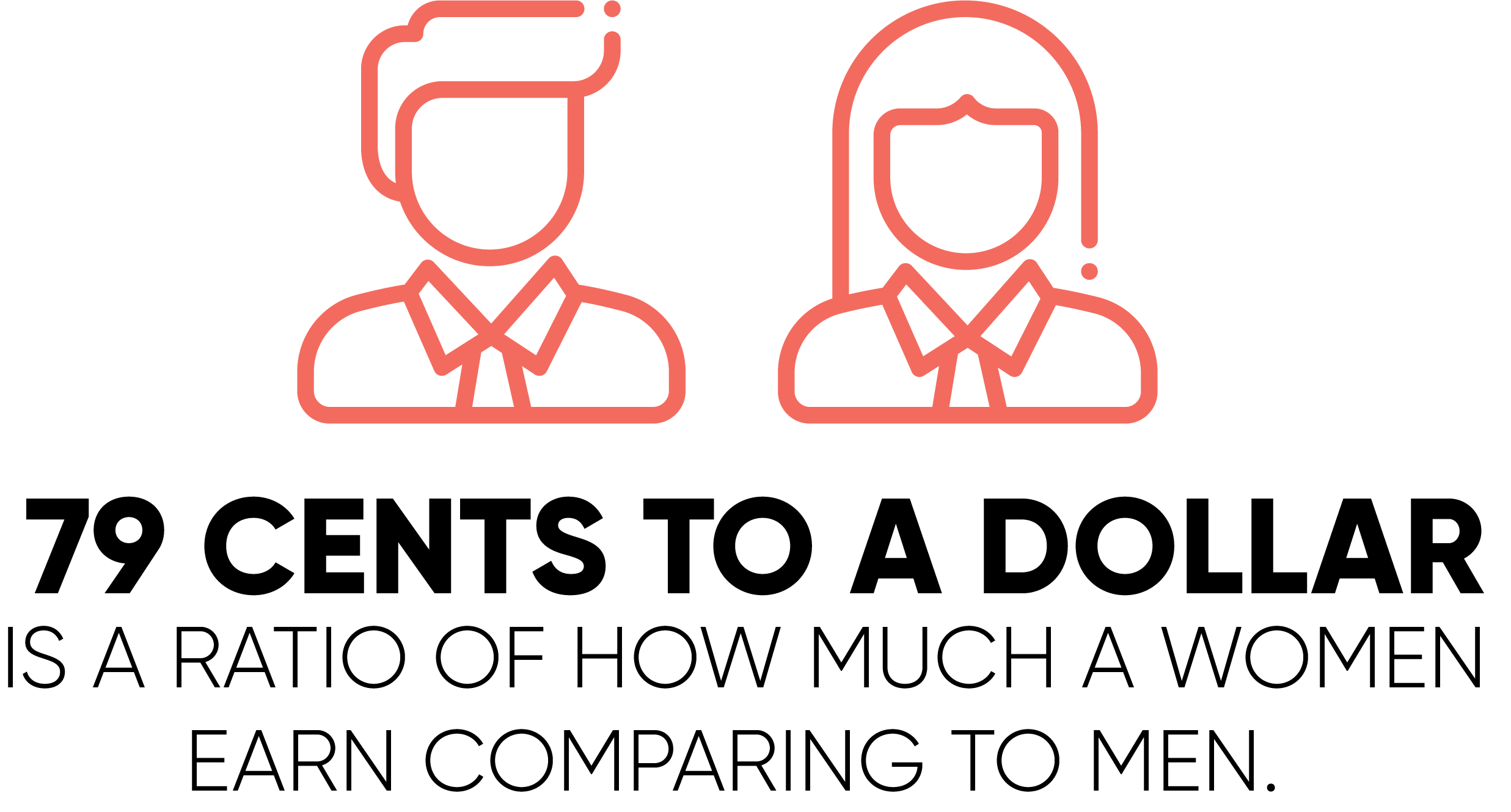
2. When Controlling for Specific Employment and Qualifications, Men and Women Make About the Same
The previous figure did not take into account the specific jobs and qualifications of men and women.
When controlling for these two variables, the gender pay gap shrinks to about 98 cents for women per every dollar men make. That is still a gap but much less than the uncontrolled figure [1]
3. The Gender Pay Gap Has Shrunk in the Past 40 Years
In 1979 the median salary for women was 62% of the median salary for men. As of 2018, women’s median earnings were now 81% of men’s median earnings.
That is a good sign but there is still more progress to be made on that front [2]
4. But the Rate of Shrinking Has Stalled in the Past 15 Years
Even though the gender pay gap has substantially decreased in the past 20 years, this rate of decrease has stalled in the past 15 years.
Women’s median earnings have hovered around 80% of men’s since about 2004 [2]
5. Utah Has the Highest Current Gender Pay Gap
As of 2018, Utah is the state with the most significant uncontrolled pay gap.
Women in Utah have a median income that is 57% of the median earnings of men. Washington D.C. has the lowest gender pay gap at 89% [2].
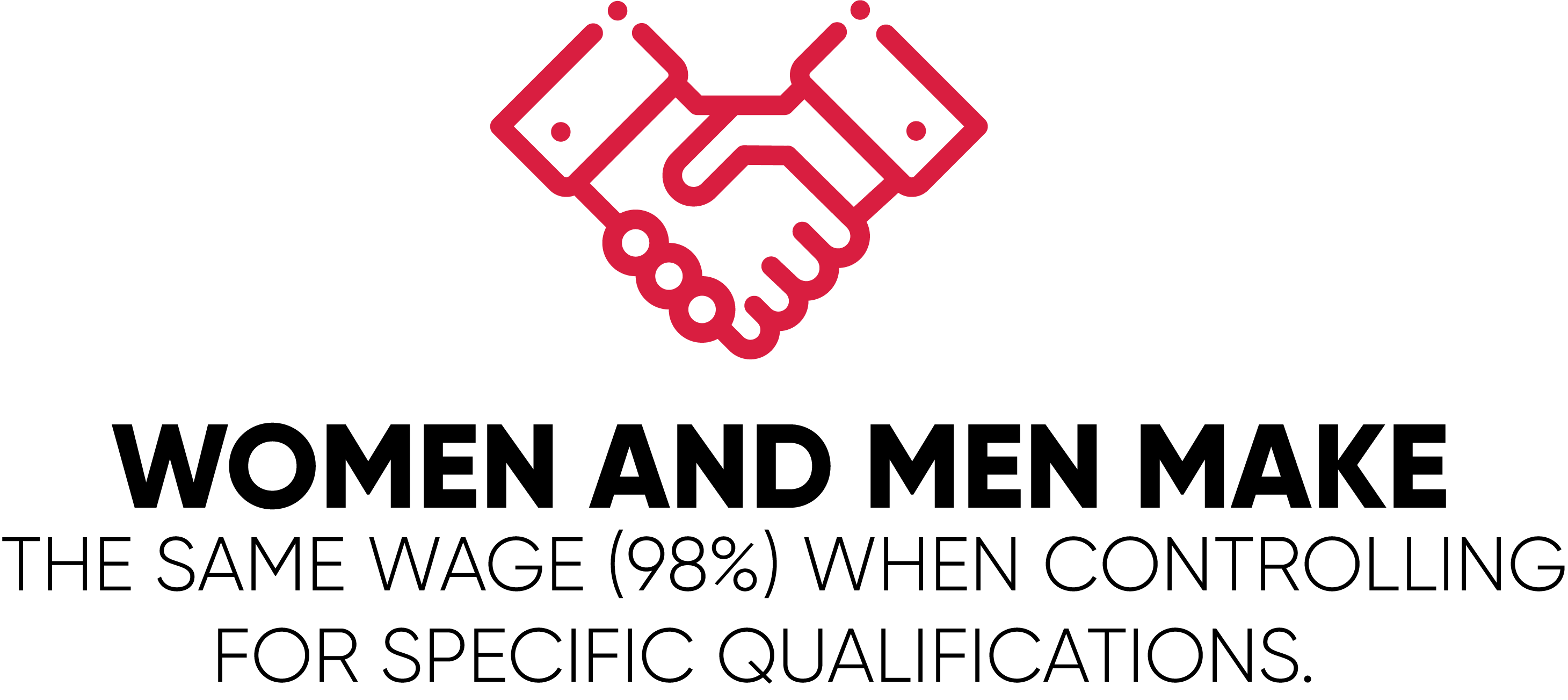
6. The Gender Pay Gap Is Relatively Small Between Single Men and Single Women
When comparing the median earnings for single men and single women who have no children, single women make about 94% of single men’s median earnings.
This stat reflects the fact that raising children is often a barricade for women’s professional advancement [2]
7. Women’s Entry Into the Labor Force Has Caused the Gender Pay Gap to Shrink
There is a positive correlation between the number of women in the workforce and a lessening of the pay gap.
In 1965, only about 40% of adult women were part of the full-time work-force. The entry of women in the labor force likely has a lot to do with the decreasing pay gap in the past few decades [3].
8. Women Perform More Unpaid Labor Than Men
Even though more women participate in the workforce nowadays, they are still more likely to spend more time than men performing unpaid labor like childcare or household tasks.
This unpaid labor most likely erodes their earning potential. Women spend about double the time taking care of children than men do and spend about 50% more time doing household activities like cleaning or cooking [3].
9. The Gender Pay Gap Is Largest Between White Men and Black Women
When uncontrolled for education and qualifications, black women make only 71% of every dollar men make.
Even when controlled for education and qualification, this gap shrinks to only 91%, still a higher gap than that between white women and white men [4].
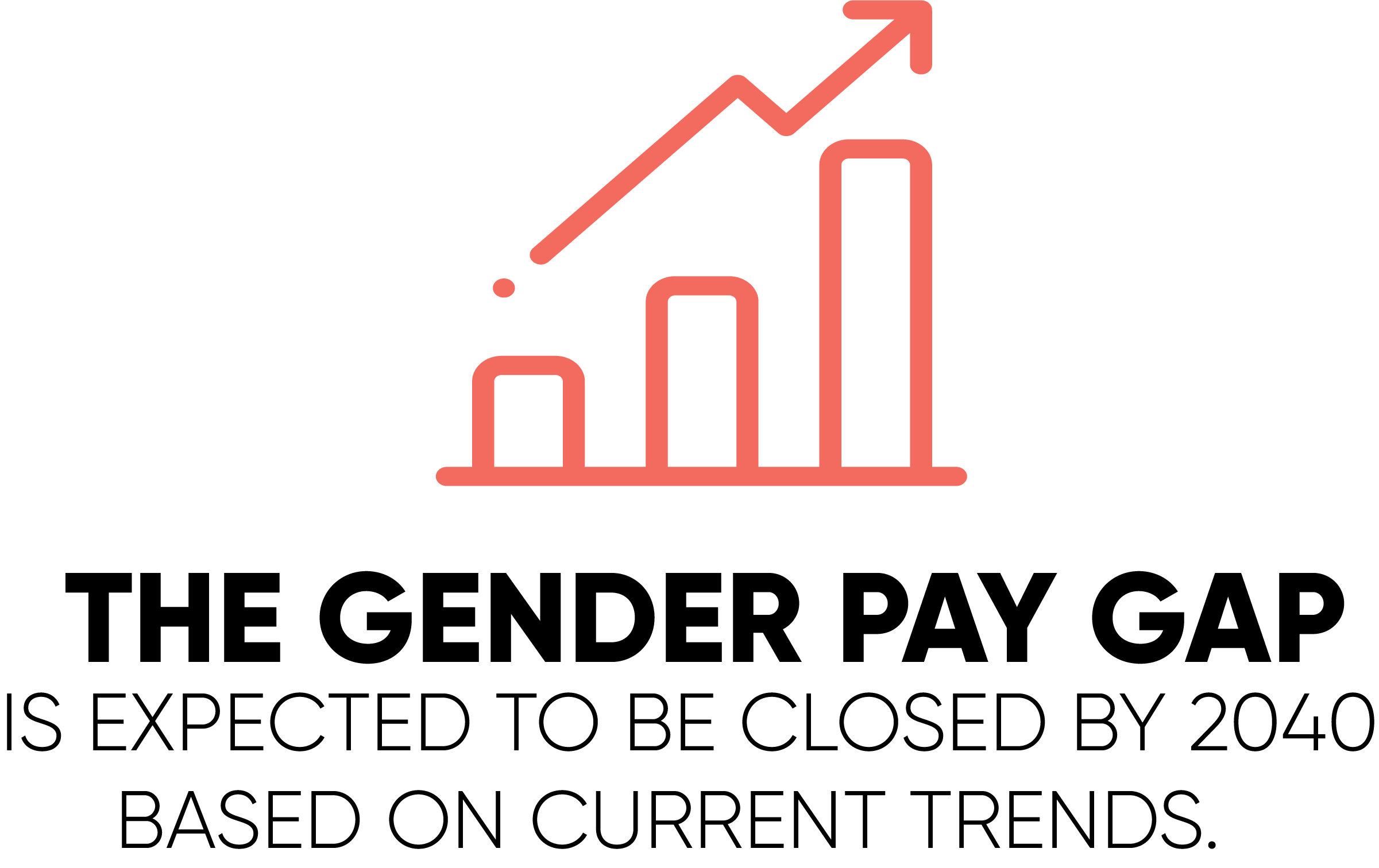
10. Given Current Trends, the Pay Gap Should Be Eliminated by 2040
If current trends extend into the future, experts believe that the gender pay gap should effectively be closed by 2040.
This is an optimistic projection, other more conservative estimates hold that it will take until 2070 to close the gap [1].
11. The Gender Pay Gap Exists All Over the World
Disparities in payment based on gender are not unique to the US. No country has succeeded in eliminating the gender pay gap.
According to the most recent data, Iceland is the country with the lowest gap and the US is ranked 51st, below countries like Cuba, Rwanda, Switzerland, Norway, Bolivia, and South Africa [5].
Gender Employment Gap Statistics
12. 57.1% of Women Participate in the Labor Force Compared to 69.1% of Men
Women make up a smaller proportion of the labor force.
As of 2019, about 57.1% of women over the age of 16 were in the labor force. This figure is compared to 69.1% of men. [6].
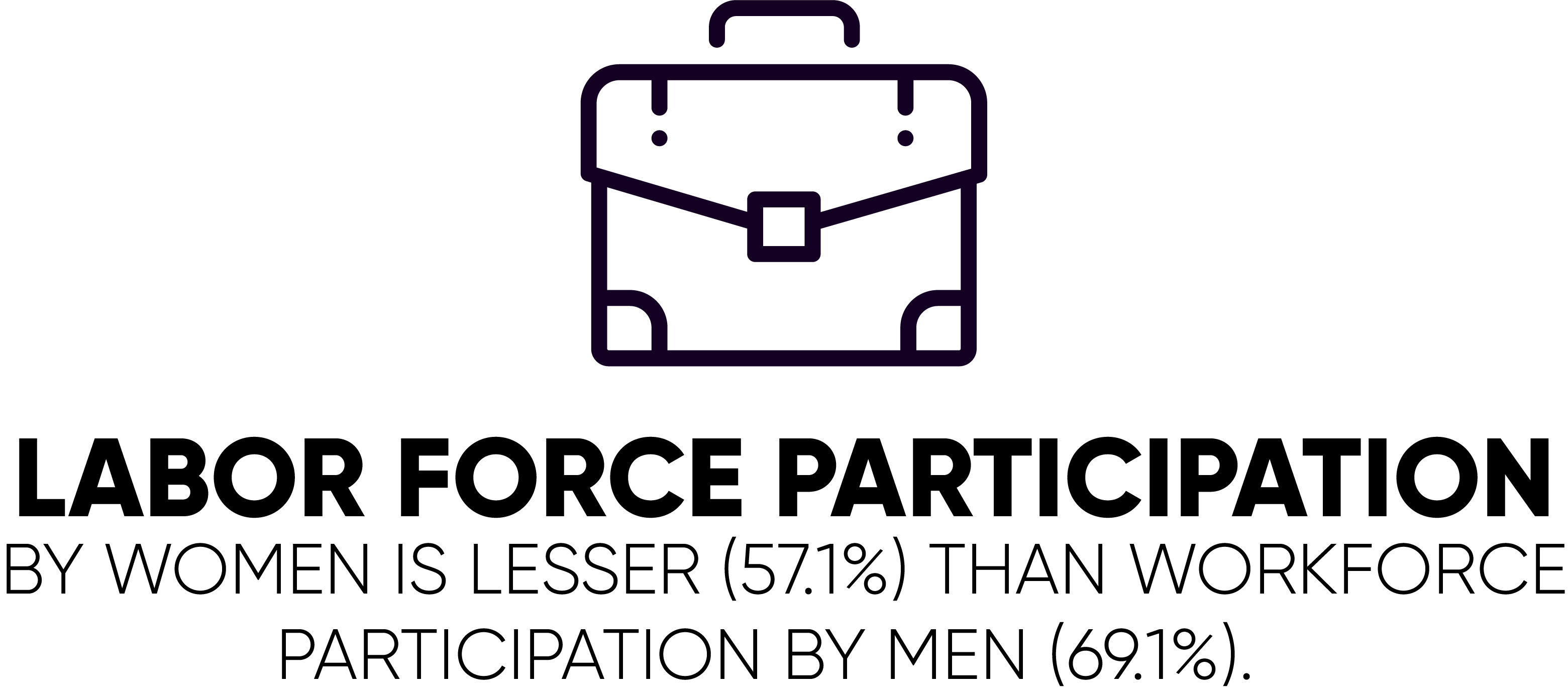
13. Women Are Underrepresented in Science and Tech-Related Positions
It is probably not surprising but women are underrepresented in the science and tech sectors.
As of 2015, women make up less than a quarter of employees in STEM-related fields [7].
14. Only 13% of Engineers Are Women
The disparity between men and women in the workforce is the highest in the fields of engineering.
Among engineering fields, mechanical engineering has the greatest gap with only 6% of mechanical engineers being women.
The lowest disparity among engineering fields was Industrial engineering (24.3%) [8].
15. Women Are Overrepresented in Health and Social Services Positions
On the flip side, women make up the majority of those employed in the health and social services field.
Women make up approximately 79% of the workforce in the health and social services field.
In general, women are overrepresented in the nonprofit and public service industries [9].
16. Women Are More Likely to Work Part-time Jobs
In addition to disparities in specific sectors of employment, women, in general, are more likely to work part-time jobs than men.
In 2013, approximately 30% of working women were employed in part-time positions as compared to 16% of employed men [10].
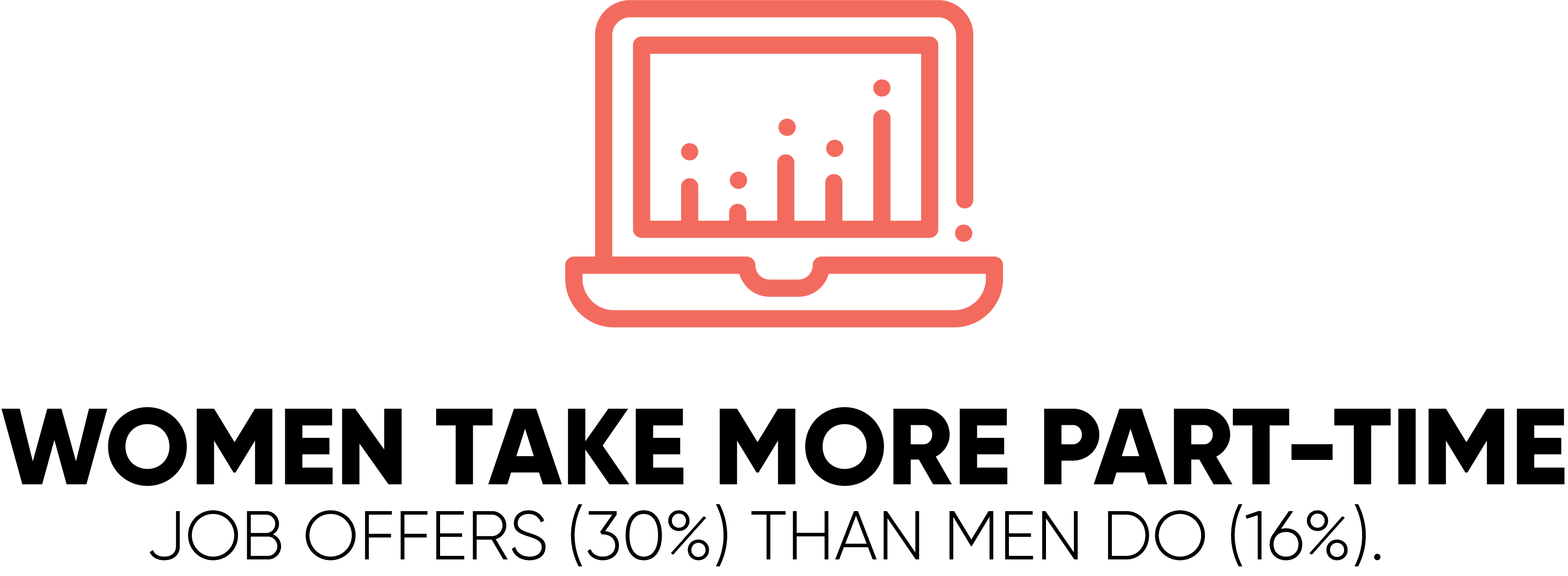
17. Women Take Longer To Progress in Their Careers
Women, in general, tend to climb the career ladder at a slower pace than men. By ages 30-44, about 47% of male employees are in managerial positions or higher compared to only 40% of women.
By late career, these numbers jump to 57% and 41% for men and women respectively. Only 3% of women in late-careers have risen to the level of executive, compared to 8% of men [4].
18. Women Spend More Time Out of the Workforce and Incur Harsher Salary Penalties
When workers temporarily leave the workforce they usually incur a salary penalty when reentering.
Women are both more likely to take gaps in their employment and take longer gaps than men.
As such, they get hit harder with salary penalties upon reentering the workforce. This effect is most pronounced when a woman takes time off to have a child [4].
19. Men Are Severely Underrepresented in Early Childhood Education and Childcare Positions
Gender gaps in employment cut both ways. Men are overwhelmingly under-represented in positions relating to early childhood education and childcare.
Men make up only 2.3% of all preschool and kindergarten teachers and make up only 6% of all childcare occupations. Men make up about 20% of elementary school teachers and around 41% of secondary school teachers.
This statistic is likely the result of childcare occupations typically being regarded as “women’s work” [11].
20. Women Are Judged As Less Competent Than Their Male Coworkers
Inequalities in employment extend to within jobs themselves.
More than 64% of women in the workplace report having to provide more evidence of their competence than male colleagues and are more likely to be judged as making mistakes or lacking knowledge.
Black women are the most likely to have their judgment and competency questioned [12].
Education Gap Statistics
21. Women Earn More Degrees Than Men
As of 2017, women outearn men in college and graduate degrees. In 2017, women earned more than half of all conferred bachelor’s degrees (57.3%), master’s degrees (59.4%) and doctorate degrees (53.3%)
The fact that women earn more degrees than men but are nonetheless underpaid compared to men is another symptom of the pay gap [6].
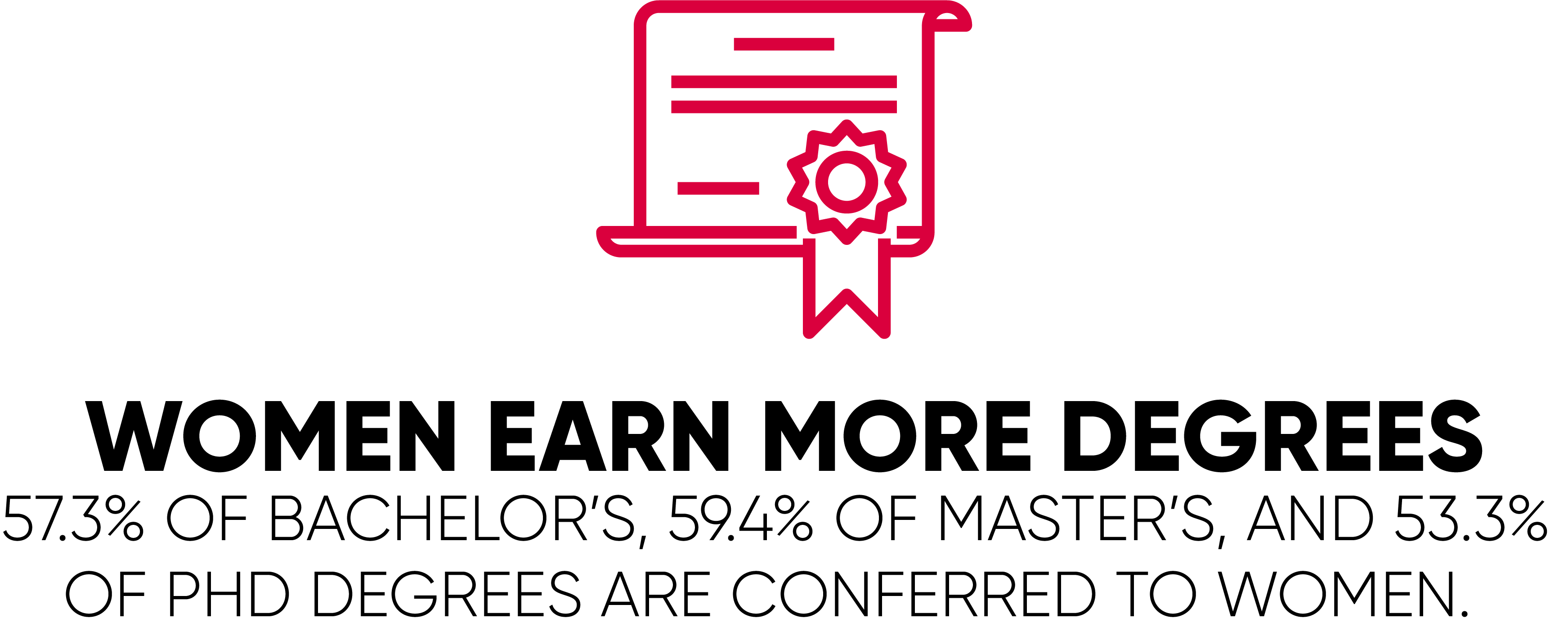
22. Women Earn Fewer STEM Degrees
Despite the fact that they earn the most amount of degrees, women only earned about one-third (35%) of conferred STEM degrees in 2016.
Among these fields, women had the highest representation in the biological and life sciences, in which they actually outnumber men (59.9%) [7].
23. Women Collectively Have More Student Debt
Women on average have to put themselves more into debt to get an education than men.
Almost two-thirds of the outstanding national student debt is held by women (~$929 billion). As a result, women have less disposable income compared to men after graduating and have to spend a longer time paying off student debt [13].
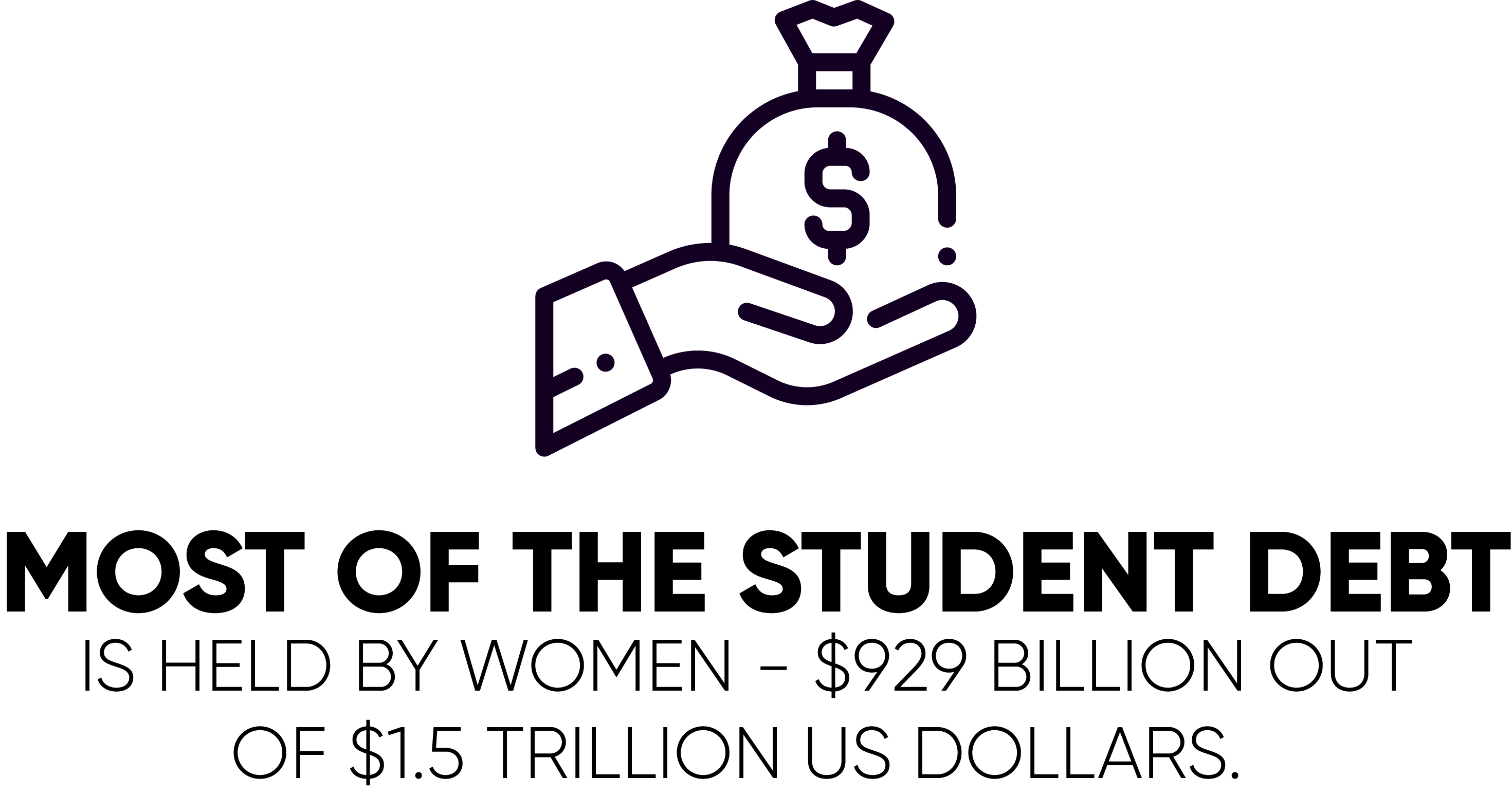
24. Women Have Higher Graduation Rates But Still Earn Less Than Men
In general, women are more likely to complete a degree than men.
Approximately 63% of women who pursue a bachelor’s degree complete it within years compared to 57% for men. Nonetheless, women still earn less out of college than men [14].
25. Globally, Women Are Still Behind in Education
Although women have made great leaps and bounds in several developed countries over the past 100 years, women as a global population are still undereducated compared to men.
Women make up more than two-thirds of the world’s illiterate population and women in most countries have lower school enrollment rates than men [15].
Conclusions
The gender pay gap is likely not attributable to one specific factor but man overlapping and reinforcing ones.
Employers not only have an ethical duty to lessen disparities that cause the inequities in pay, employment, and education, there is evidence that more diverse workplaces are more productive and generate higher than average returns [16].
- Reiners, Bailey. “30 Gender Pay Gap Statistics You Should Know.” Built In, 22 Jan. 2020, builtin.com/recruiting/gender-pay-gap-statistics. [↑] [↑] [↑]
- Bieber, Christy. “Gender Pay Gap Statistics for 2019.” The Ascent, 19 Aug. 2019, www.fool.com/the-ascent/research/gender-pay-gap-statistics/. [↑] [↑] [↑] [↑]
- “United States Department of Labor.” Https://Www.dol.gov/Wb/Resources/breaking_down_wage_gap.Pdf, Womens Bureau, 2014. [↑] [↑]
- “Gender Pay Gap Ratios, Stats and Infographics 2019.” PayScale, 2019, www.payscale.com/data/gender-pay-gap. [↑] [↑] [↑]
- The Global Gender Gap Report 2018. World Economic Forum, 2018, www3.weforum.org/docs/WEF_GGGR_2018.pdf. [↑]
- “Females in the US Workforce.” Catalyst, 5 June 2019, www.catalyst.org/research/women-in-the-workforce-united-states. [↑] [↑]
- “Women in Science, Technology, Engineering, and Mathematics (STEM): Quick Take.” Catalyst, 14 June 2019, www.catalyst.org/research/women-in-science-technology-engineering-and-mathematics-stem/. [↑] [↑]
- “Employed Persons by Detailed Occupation, Sex, Race, and Hispanic or Latino Ethnicity.” U.S. Bureau of Labor Statistics, U.S. Bureau of Labor Statistics, 22 Jan. 2020, www.bls.gov/cps/cpsaat11.htm. [↑]
- “Gender Inequality and Women in the US Labor Force.” Gender Inequality and Women in the US Labor Force, 23 Nov. 2011, www.ilo.org/washington/areas/gender-equality-in-the-workplace/WCMS_159496/lang–en/index.htm. [↑]
- “Part-Time and Full-Time Workers.” Women in the States, 2013, statusofwomendata.org/explore-the-data/employment-and-earnings/additional-state-data/part-time-and-full-time-workers/. [↑]
- “Data About Men Teachers.” MenTeach, 2018, www.menteach.org/resources/data_about_men_teachers. [↑]
- “Key Findings from the Women in the Workplace 2018 Report.” Lean In, 2018, leanin.org/women-in-the-workplace. [↑]
- “Women’s Student Debt Crisis in the United States.” AAUW, May 2019, www.aauw.org/research/deeper-in-debt/. [↑]
- “The NCES Fast Facts: Graduation Rates.” National Center for Education Statistics (NCES) Home Page, a Part of the U.S. Department of Education, nces.ed.gov/fastfacts/display.asp?id=40. [↑]
- “Facts & Figures.” UN Women, www.unwomen.org/en/news/in-focus/commission-on-the-status-of-women-2012/facts-and-figures. [↑]
- Saxena, Ankita. Workforce Diversity: A Key to Improve Productivity. Vol. 11, 2014, https://doi.org/10.1016/S2212-5671(14)00178-6. [↑]